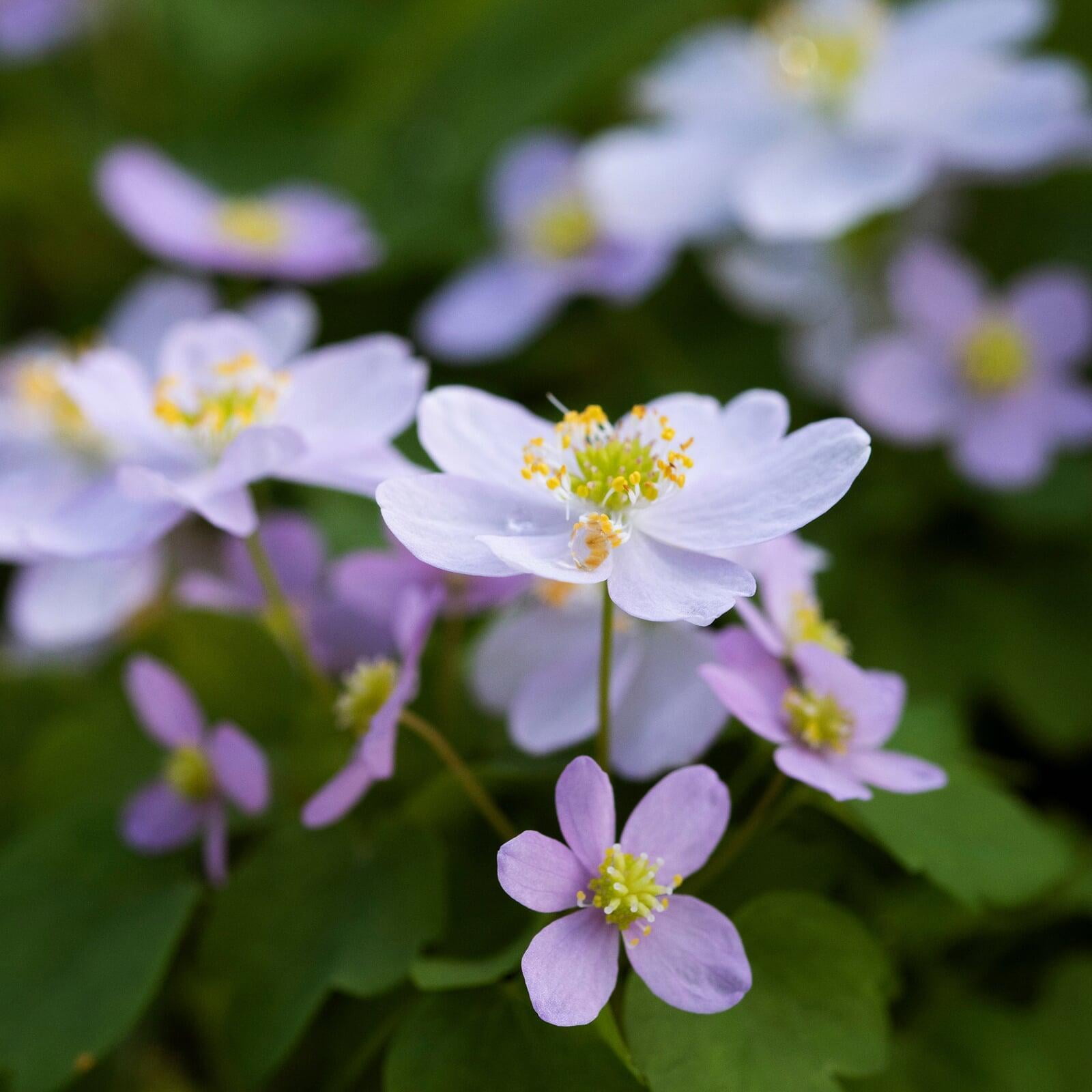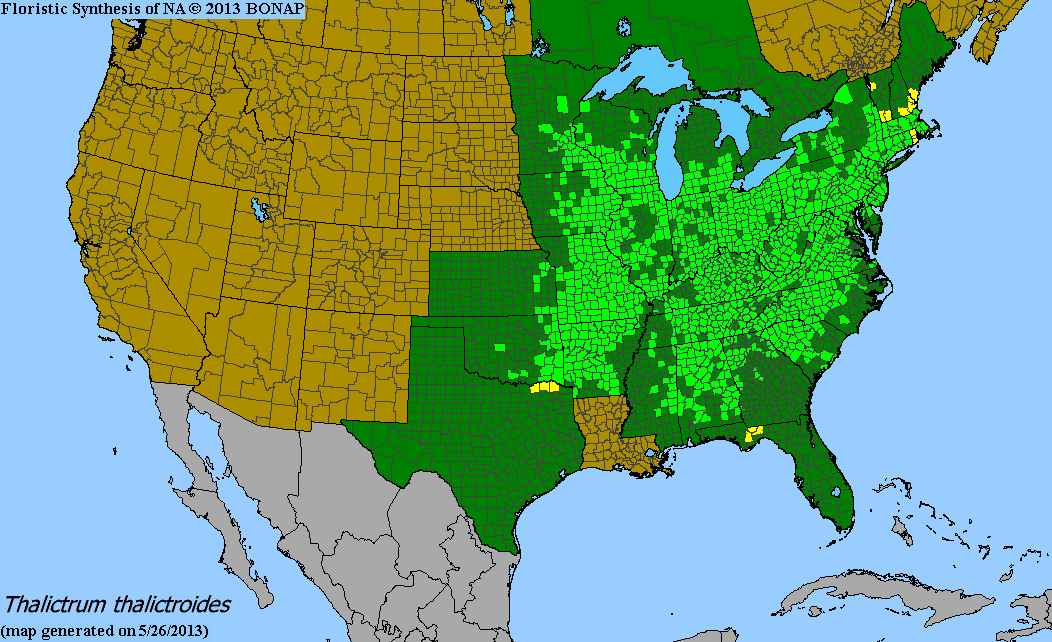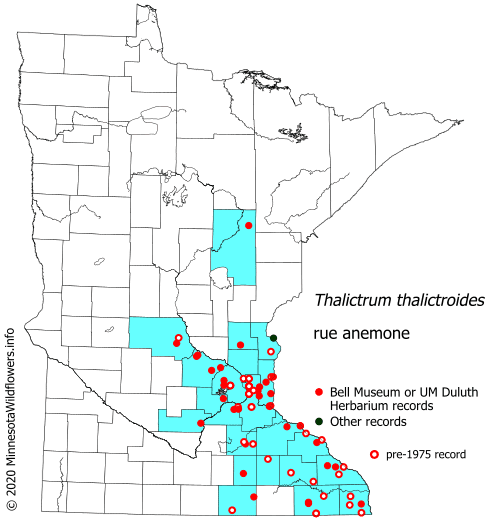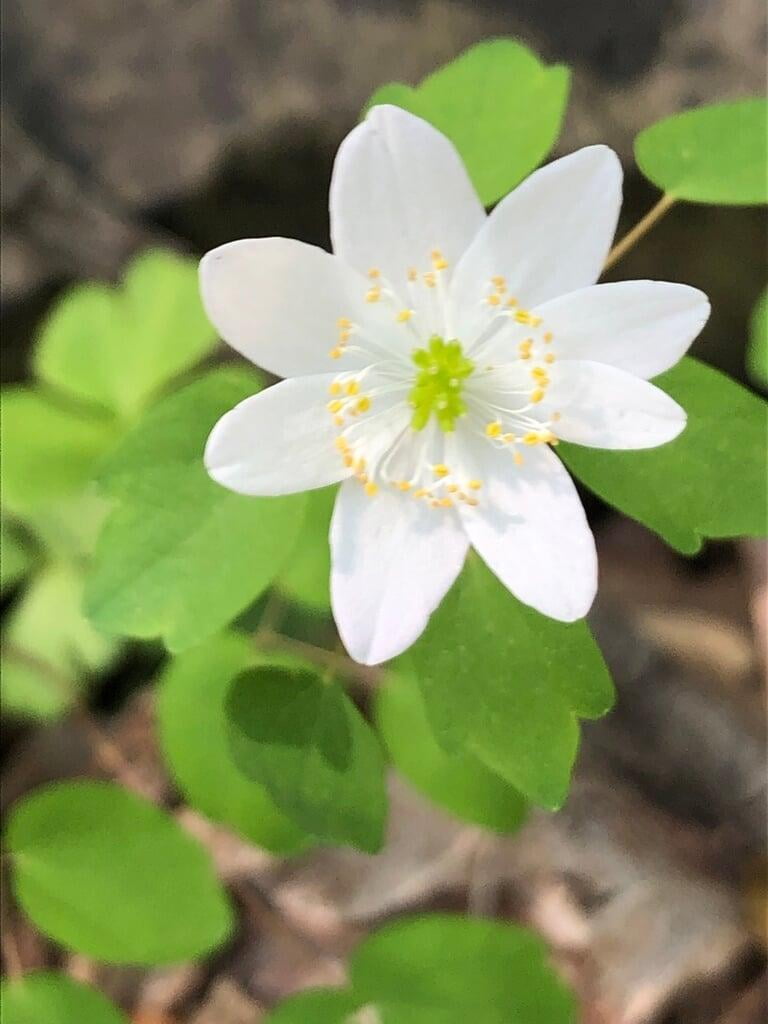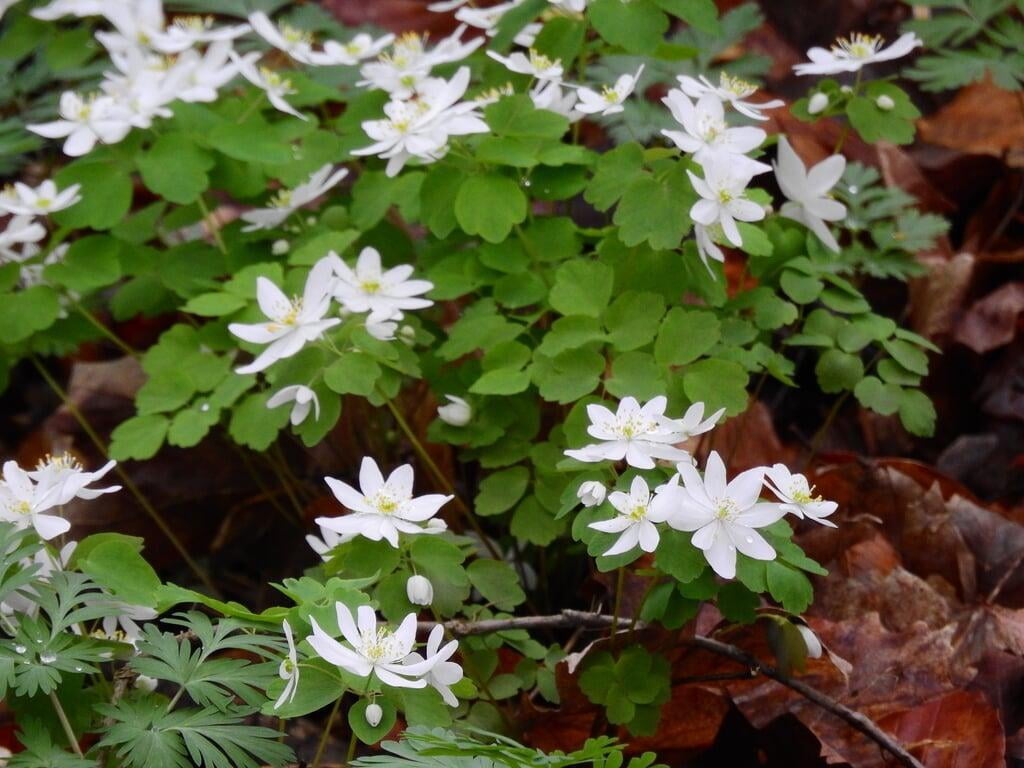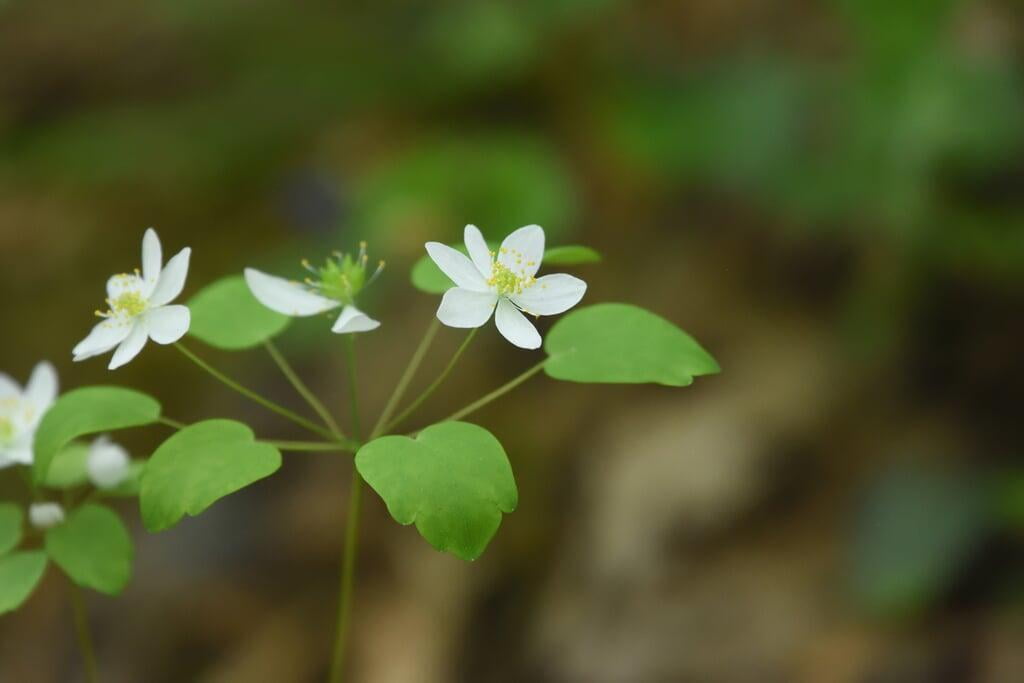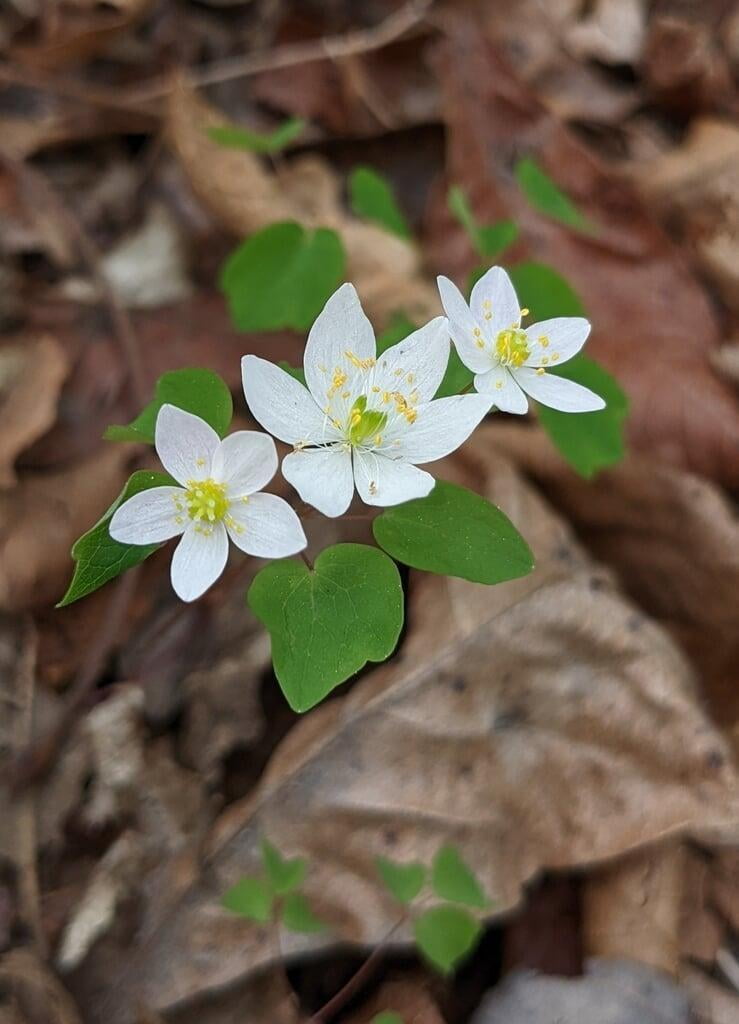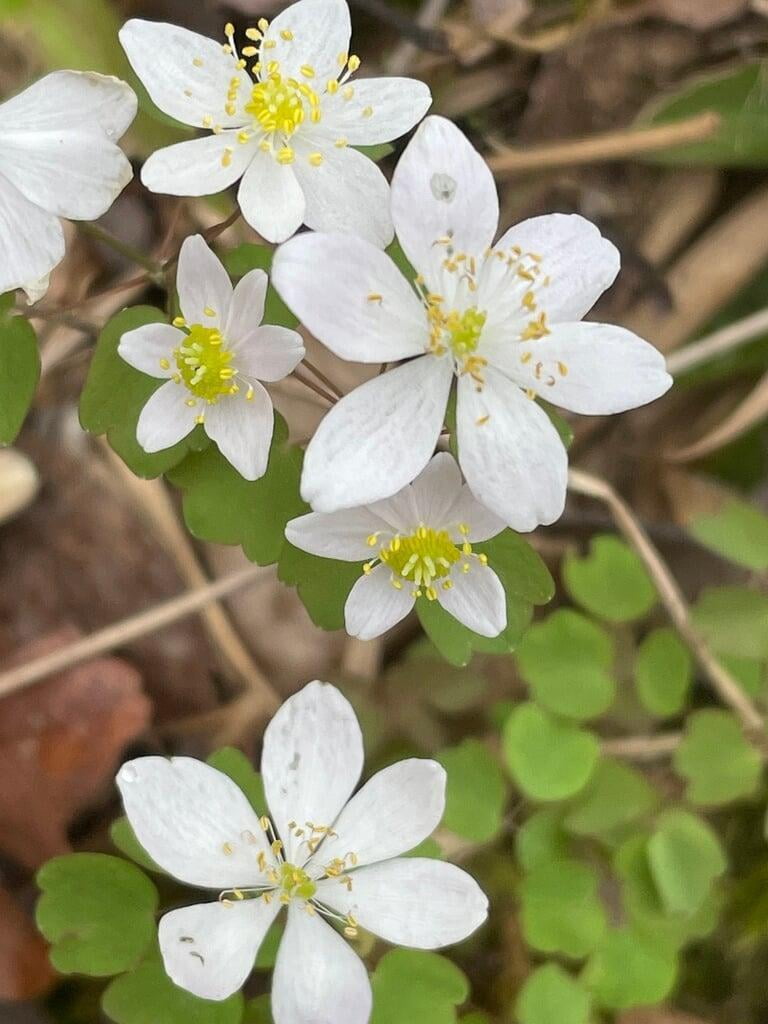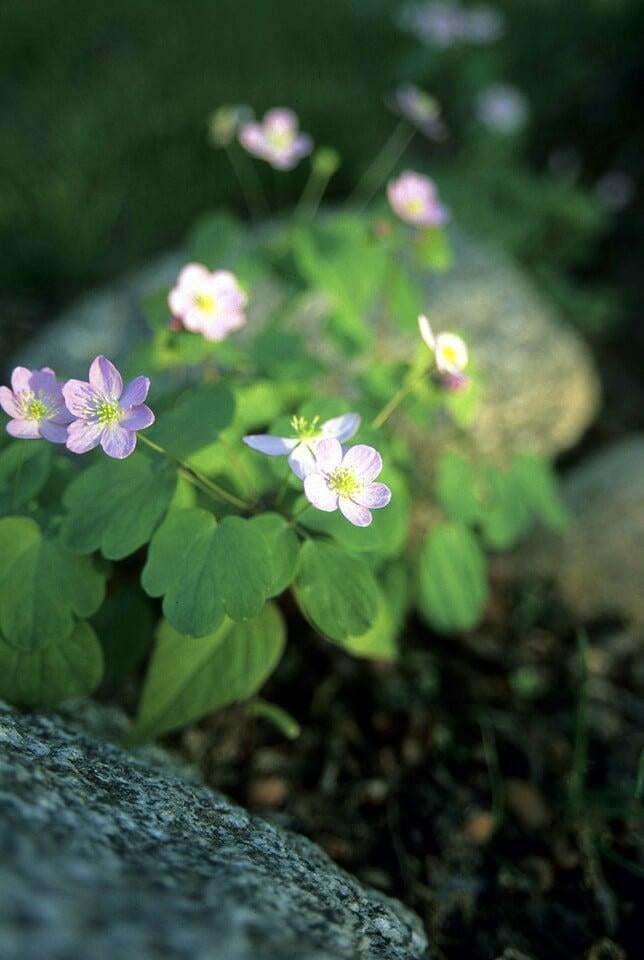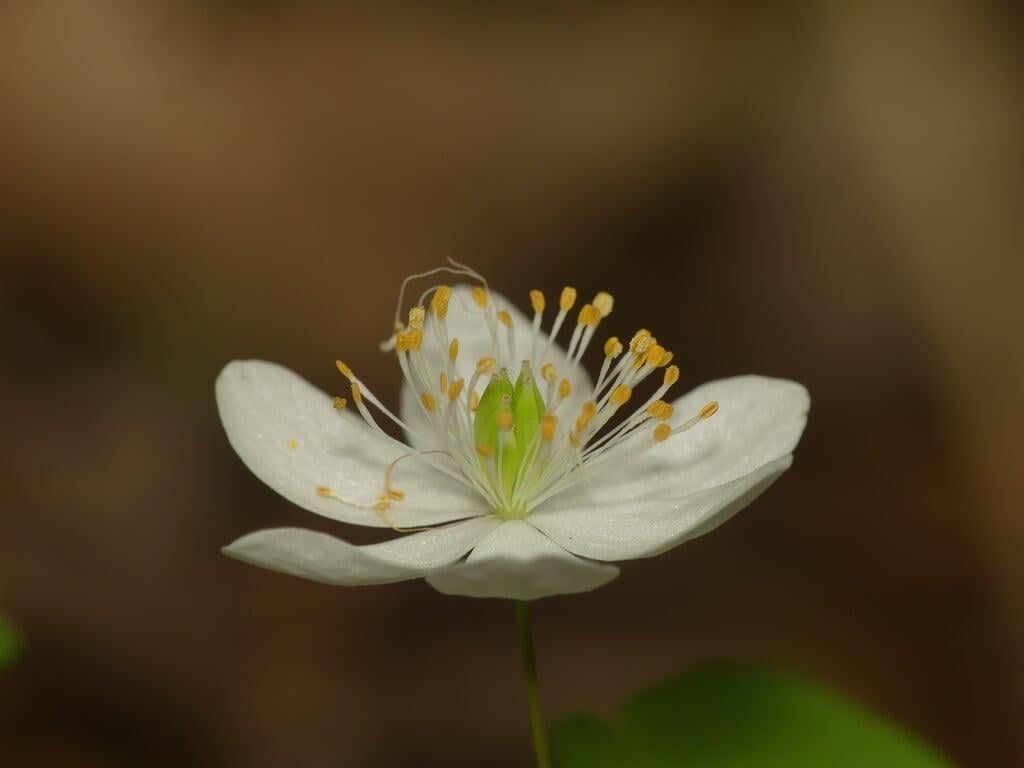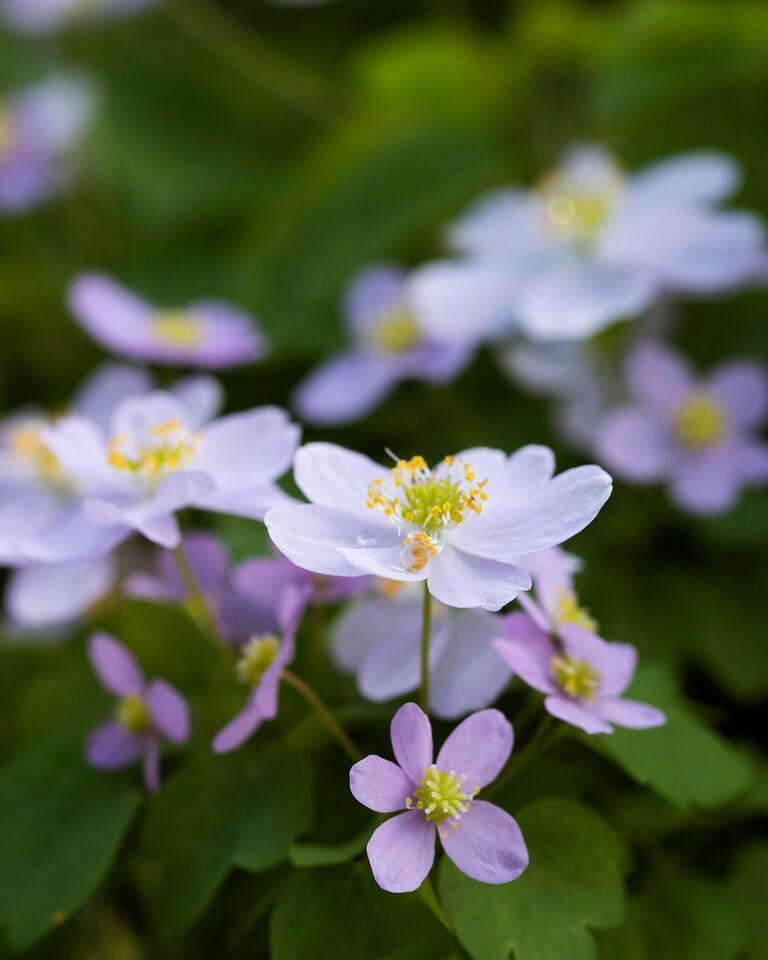Thalictrum thalictroides
Rue anemone Description:
Thalictrum thalictroides, commonly known as Rue Anemone, is a herbaceous perennial plant that belongs to the buttercup family (Ranunculaceae). It is native to North America and can be found in moist woodlands, forests, and meadows from the eastern part of Canada to the eastern United States.
Rue Anemone typically grows 4 to 8 inches tall and has a spreading habit. It has lobed, parsley-like foliage that emerges in early spring and dies back in the summer. In early spring, the plant produces delicate, white or pink, star-shaped flowers that resemble those of anemones. The flowers are held above the foliage on slender stems.
Thalictrum thalictroides is an excellent plant for naturalizing in a woodland garden or shaded border, and it is highly attractive to pollinators such as bees and butterflies. It prefers a moist, well-drained soil in partial to full shade and can be used in borders, rock gardens, or as a ground cover. The plant is deer-resistant and can be easily grown from seed or transplants. The early spring blooms make it a welcome addition to the garden after a long winter.
Native Range:
Rue anemone can be found in the Central and Eastern United States. In Minnesota, Rue anemone is primarily found in the Southeastern region of the state.
Standard Plant Information:
Plant Height: 4" - 8" inches
Bloom Time: April - June
Preferred Habitat: Does well in part shade to shade and is often found in woodland areas.
Sowing:
For most homeowners, the best option is to scatter seed on the ground by hand broadcasting at a minimum of 16-64 pls ounces per acre. For even coverage, we recommend that you broadcast seed in perpendicular rows across the site to ensure even coverage.
You’ll want to broadcast any grass seed first, which will get raked into the soil lightly. Next, it is ideal to mulch the area lightly with either a clean (no seed) straw or preferably with our native Little Bluestem straw, sold at our retail garden centers. After a light mulching is complete, now it’s time to broadcast your native wildflower seeds, which should not be raked into the soil. A good rain or watering is sufficient to cover the seed.
Planting:
Simply dig a hole in the soil slightly larger than the plant’s roots. Ensure that the soil line of the plant is maintained during the transfer (i.e. the plant should be at the same level with the ground as it was in the pot). Pack any loose dirt back around the plant and make sure you water it well the same day to ensure it has the best chance of survival.

